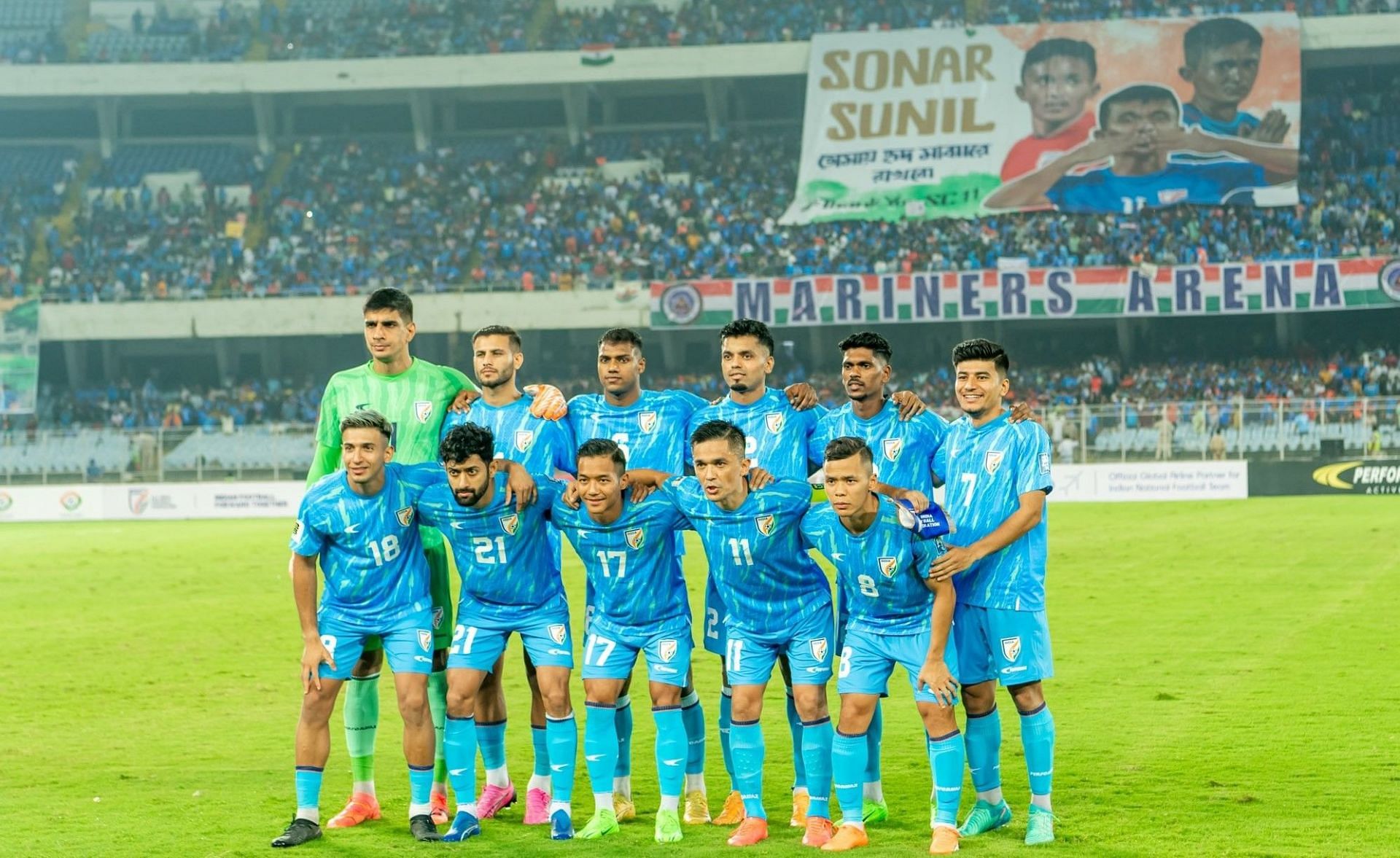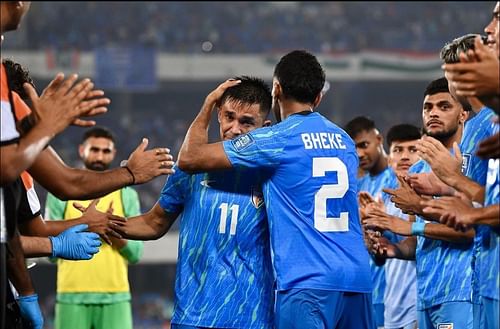
3 reasons why India managed only a draw against Kuwait
India’s clash against Kuwait on Thursday had high stakes, with both teams vying for a spot in the third round of the FIFA World Cup Qualifiers 2026. The game ended in a goalless draw, a disappointing result for the Blue Tigers as their qualification hopes now look bleak.
Adding to the significance, this was Sunil Chhetri’s final game for the country. Unfortunately, the players did not deliver the fitting farewell he deserved. The stadium was filled with a sinking feeling as India’s legendary marksman walked down the tunnel in the iconic Blue jersey for the last time.
Despite the result, India remain second in the table, but with both Afghanistan and Kuwait in contention for the second spot, Igor Stimac’s men must secure a positive result against Qatar to have any chance of progressing.
The game against Kuwait was seen as a virtual do-or-die contest as a result, and the visitors will likely be the more satisfied of the two teams. Despite a month-long camp, India’s performance was not up to the mark, which raises questions about Stimac’s selection and the players’ lack of quality.
On that note, here are three major reasons why India failed to secure all three points against a solid Kuwait side.
#1 Inefficiency in the final third
India’s lack of quality in the final third has been a persistent problem in recent months, and this issue continued against Kuwait. After weathering Kuwait’s early pressure, India began to find their rhythm midway through the first half, with Lallianzuala Chhangte and Liston Colaco getting into promising positions. Despite their liveliness, they struggled to deliver when it mattered most.
Sunil Chhetri virtually had no service, as India only looked threatening from set-pieces. There appears to be a plan to progress to the final third, but once the ball reaches there, the players seem to run out of ideas. India lack a consistent pattern to create chances, often leaving Chhetri isolated in the penalty area, which is not a positive sign.

When Stimac introduced Rahim Ali and Brandon Fernandes, they began committing more players forward, but Ali missed a golden opportunity to give his side the lead. This performance, along with other recent ones, shows that the Blue Tigers seem like a shadow of the team they were in 2023 when they won three trophies.
#2 Midfield looked unbalanced
Igor Stimac made some bold choices in the starting lineup, notably dropping Jeakson Singh in favor of Suresh Singh Wangjam and Anirudh Thapa in the midfield pivot. Additionally, starting Sahal Abdul Samad over the in-form Brandon Fernandes raised a few eyebrows.
These decisions backfired, as India’s midfield struggled in the first half. Thapa was rarely involved and often sloppy in possession, while Sahal, hampered by an injury-ridden season, failed to make an impact. India appeared overrun in midfield, prompting Stimac to make changes in the second half.
Fernandes and Ali were brought on for Thapa and Sahal, and the team adopted a more direct approach. However, it often seemed as if the midfield was non-existent. Despite the quality players at his disposal, the hosts just failed to control the game and impose themselves on Kuwait, which ultimately highlights the questionable midfield selection.
#3 Lack of clear identity
All the aforementioned issues stem from this core problem - the current Indian team lacks a clear identity compared to last year. When Stimac announced the lineup, it seemed India would build up from the back and use Chhangte and Colaco’s abilities on the flanks in the final third.
However, this didn’t go to plan, as Kuwait consistently doubled up on the wings, preventing the wingers from being isolated. There appeared to be no Plan B in the first half until Stimac adopted a more direct approach in the second period.
At that point, India seemed to embrace a chaotic style, looking to bypass the midfield entirely and relying on long balls to Ali and Chhetri. However, while both players have pace and technical ability, they are not strong in the air. This approach also reduced the threat of Fernandes and Chhangte, who were unable to receive the ball in areas where they could create problems.
It appears India currently lack a tactical plan to counter opponents, and recent results reflect these struggles. With just one win in their last 10 games, it’s evident that Igor Stimac is running out of ideas.